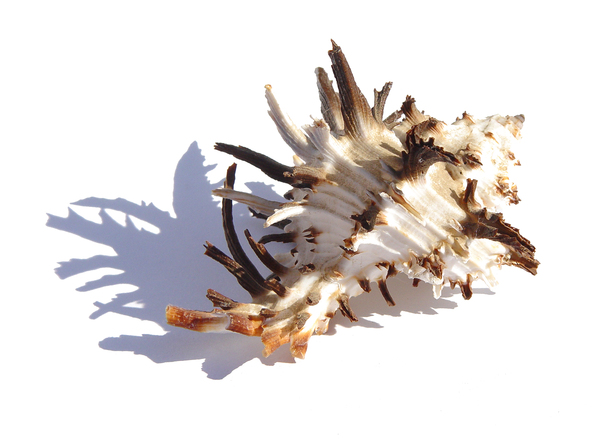After Prince’s sudden death last week, we saw an outpouring of grief, memories, tributes, retrospectives, and purple, the artist’s iconic color. While nobody wore purple like Prince did, the English language has long been sporting the hue.
Purple
The English purple is actually a variation on an earlier form, purpure. Those double r’s can be tricky to say, so, in a process called dissimilation, English speakers transformed the second r into l, a related sound.
Purple and purpure are both found in Old English, when they first referred to purple garments. The color historically shaded towards a dark red, such as crimson, and bedecked emperors, kings, senators, and, at one point, cardinals. Purple long signaled power. But by the 15th century, purple sheds its clothes – and status – to name the color as such.
English borrowed purpure both from French and directly from Latin, which had purpura. Like English’s purple, this purpura meant “purple garment” and the color “purple,” but it also signified “purple dye.” For, as the Oxford English Dictionary paints it, purple was fundamentally a pigment “obtained from the hypobranchial gland of various gastropod molluscs found in the Mediterranean.” Or sea snails.

The ancient Phoenician city of Tyre made its name for the dye it famously produced: Tyrian purple. Making this dye was an expensive and laborious process, and so only the wealthiest could afford it, hence the color’s historic association with status and power.
Latin’s purpura is from the Ancient Greek, πορϕύρα (porphyra), similarly naming “purple” in color, cloth, and shellfish. Etymologists suspect the Greek word is ultimately loaned from a Semitic source.
Citing the use of purple to describe the sea, philologist Walter Skeat suggests purple is formed from a Greek verb meaning “to stir up,” as in the waters of a wine-dark ocean amid the purple-dark clouds of a storm. Skeat’s explanation is a bit of etymological purple prose, however; this expression for “excessively ornate writing” we can ultimately credit to the Roman poet Horace.
While Skeat’s theory for purple washes right out, his reference to “wine-dark seas” in Homeric verse is still significant in the story of color words. The story is a truly fascinating one, involving the astonishingly late development of blue, that ubiquitous color of sea and sky, in language. I’ll leave its telling to the radio show and podcast, Radiolab: “Why Isn’t the Sky Blue?”
For more on color words on this blog, enjoy earlier posts on orange and scarlet. And for more on dyes, see my post on shellac.
The association between the artist’s name and purple’s royal past certainly suggest a reason Prince so branded himself with the color. But perhaps there are other explanations, too. As an artist, Prince blends (and bends) so many genres into his music, so many identities into his persona. Perhaps like purple, a color that blends red and blue. Or purple, whose history blends both the high and low, worn by god-like kings but worked out of the sea.
The medical lexicon lifted verbatim both Greek ‘porphyria’ and Latin ‘purpura’.
The first was the generic name applied in the 19th century to a cluster of rare and biochemically complicated inherited disturbances in the synthesis and metabolism of ‘porphyrins’, a genus of ring-like molecules. The hemoglobin molecule is a species of porphyrin that bears an iron ion at its ring’s center.
Purpura are clusters of smallish round purple spots in the skin resulting from an array of disparate causes, including, to name a few, insufficient numbers of platelets (thrombocytopenia) or an inflammatory condition of the capillaries or other vascular twigs (‘Henoch-Schoenlein purpura’) or – – rarely these days – – – scurvy. The spots are reddish-purple due to de-oxygenation of the extravasated red blood cells
LikeLike
Very edifying! So, do the iron ions at the center of porphyrin rings produce some sort of dark reddish coloration? Or do the shape of the rings in some way resemble sea snails?
LikeLike
If Ancient Greek πορϕύρα (poryphyra) is ultimately from a Semitic source it must have been a very early borrowing as the earliest written accounts of purple dye made from murex are believed to be from Knossos tablets recorded in Linear from Pylos and Knossos from around 1250 BC. The Knossos tablets refer to “po-pu-ro” interpreted as ‘purple’ and “po-pu-re-ja” thought to be referring to ‘female purple dyers’.
LikeLike
An early borrowing indeed. Is there any reason to think that the Ancient Minoans 1) lacked the technology and material culture to warrant an indigenous term or 2) the cultural contact to borrow a term from Near East seafarers?
LikeLike
Hey, mr. Pedantic here. First of all, Great article, really enjoyed it 🙂
I just wanted to point out one typo I spotted; the correct transliteration of the greek is porphyra, not poryphyra.
thanks again for sharing all these interesting etymos with us 😀
LikeLike
Thanks for reading – and for reading closing!
LikeLike